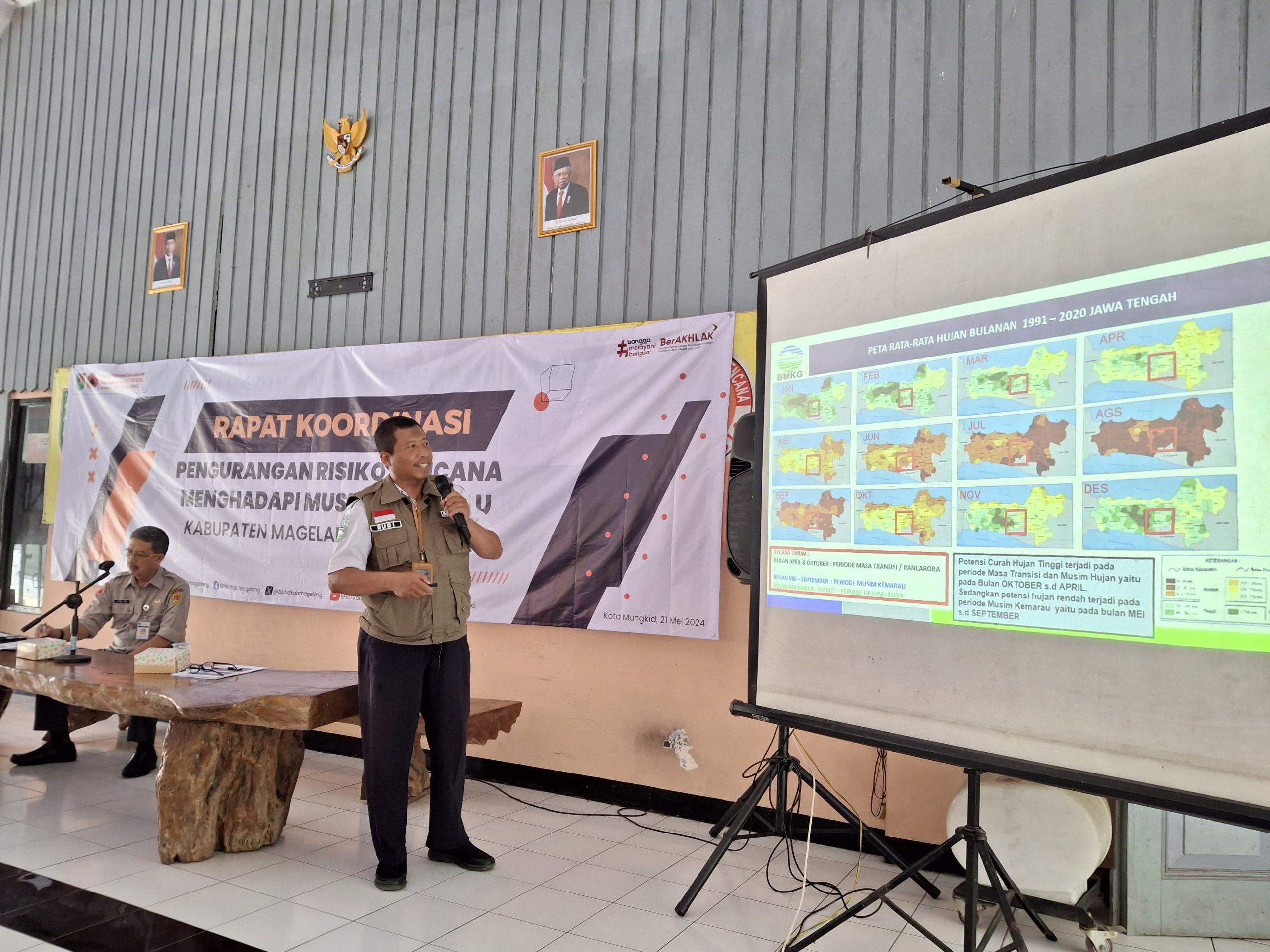NEWSMAGELANG. ID-Badan Meteorology, Climatology and Geophysics (BMKG) Central Java Climatology Station (Central Java) forecasts the peak of the dry season in 2024 in Magelang Regency generally in July and August.
Meteorology and Geophysics Observer of the Central Java Climatology Station, Rudi Setyo Perihatin in his presentation said the earliest dry season occurred in May Dasarian II and the latest May Dasarian III
“While the peak of the dry season in Magelang Regency is generally July and August,” said Rudi when he was a resource person for the Dry Season Meeting at BPBD Magelang Regency, Tuesday (21/05/2024)
He added that the surface temperature anomaly of Indonesian waters from April to September 2024 is predicted to be warm.
“In June-August 2024, the flow of air masses in the territory of Indonesia is dominated by easterly winds (Australian Monsoon),” said Rudi.
The Central Java Climatology Station (Staklim) BMKG also forecasts the length of the 2024 dry season in northern and southern Magelang Regency at around 4-5 months, while the central region is 3-4 months.
On the occasion, Rudi also conveyed a number of recommendations to the government and the community to face the 2024 dry season.
Ministries/Agencies, Local Governments, related institutions, and the entire community to be better prepared and anticipatory to the possible impacts of the dry season, especially in areas that experience a below-normal dry season (drier than usual).
“The region is predicted to experience an increased risk of meteorological drought, forest and land fires, and lack of water sources,” Rudi said.
Local governments, according to him, can more optimally carry out water storage at the end of this rainy season to meet lakes, reservoirs, reservoirs, retention ponds, and other artificial water storage in the community through rainwater harvesting movements.
“As for local governments, we appeal to be more optimal in storing water at the end of the rainy season to meet lakes, reservoirs, reservoirs, retention ponds, and other artificial storage in the community through the Rainwater Harvesting Movement,” he said.


